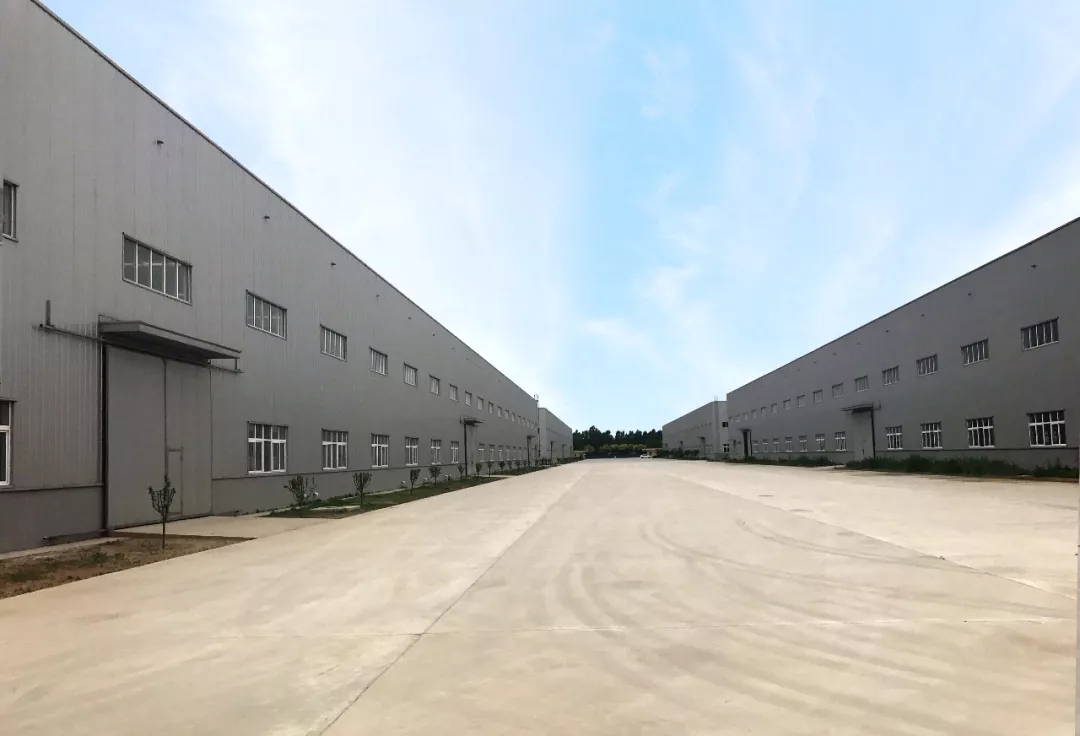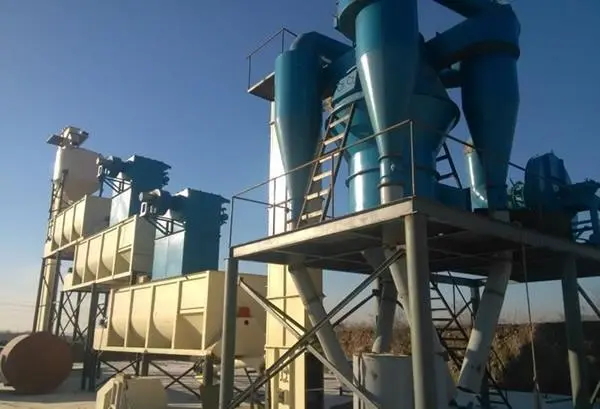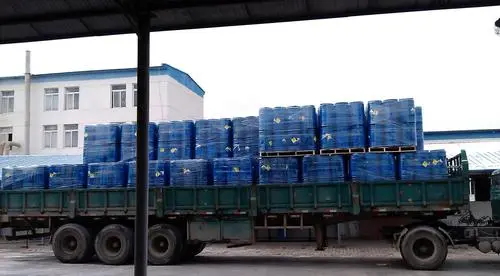Coagulation refers to the process in which colloids are destabilized by compressing the double layer; flocculation refers to the process in which colloids coalesce into large flocs due to the adsorption and bridging effect of polymers; coagulation includes two processes: coagulation and flocculation.
01 Coagulant
1
Polymerized ferric chloride (PFC)
a. Physical and chemical properties:
Brown-yellow viscous liquid. Relative density 1.450, acidic, soluble in water. Polyferric chloride was developed in the late 1980s, aiming at problems such as serious harm to the human body caused by residual aluminum in aluminum salt flocculants and the biological toxicity of aluminum, poor coagulation effect of iron salt flocculants, and poor product stability. A new type of inorganic polymer flocculant developed. Compared with ferric chloride, the flocculation effect of polyferric chloride is much higher. The effect is more pronounced when the treated water temperature is lower.
b. Preparation method:
Add sodium hydroxide to ferric chloride solution to generate basic ferric chloride-sodium, and add calcium hydroxide to generate basic ferric chloride-calcium. It is required that the concentration of iron ions (Fe3+) be between 0.01 and 0.75 mol/L, and the ratio of hydroxide to iron (OH/Fe) be between 0 and 2.5. The specific preparation is as follows: Dilute 10mL 0.5mol/L ferric chloride hexahydrate (FeCl3 6H2O) with water to 200mL, slowly add 50mL 0.25mol sodium hydroxide under rapid stirring, and control the degree of alkalization to about 11%. That is the product. The quantity of each preparation should not be too much, and it should be used immediately after preparation. Storage shall not exceed 20h, otherwise the solution will change.
c. Product application:
This product can be used for purification treatment of domestic water and production water supply. It can be directly metered and added or added after appropriate dilution. When used as raw water treatment, the effective dosage is 20-50 mg/L. It is applicable to a wide range of pH values. The pH of the treated water does not decrease much, and the color of the water does not increase. A new polymer flocculant.
2
Polyferric Chlorosulfate (PFCS)
a. Physicochemical Properties:
Brown-yellow viscous liquid, odorless or slightly chlorine-like. Relative density 1.450, acidic, soluble in water.
b. Preparation method:
① FeSO4 is used as raw material, the amount of FeSO4 is 23% to 64%, the amount of water is 15% to 20%, the amount of catalyst is 2% to 8%, and sodium hypochlorite is used as the oxidant, fully stirred and reacted for 3 hours, after static aging Filter to get the product. ② Ferric sulfate is used as raw material and chlorine gas is used as oxidant to oxidize ferrous iron to ferric ions, then neutralized with sodium hydroxide to adjust the degree of alkalinity, and calcium chloride is added as a stabilizer at the same time, and reacted for 0.5h to obtain liquid product.
c. Product application:
This product can be used for purification treatment of domestic water and production water supply. It can be directly metered and added or added after appropriate dilution. When used as raw water treatment, the effective dosage is 20-50 mg/L. It is applicable to a wide range of pH values. The pH of the treated water does not decrease much, and the color of the water does not increase. A new polymer flocculant.
3
Polyphosphorus ferric sulfate (PPFS) a.Physical and
chemical properties:
dark reddish brown liquid, reddish brown solid after concentration and drying. Polyphosphorus ferric sulfate is a new type of inorganic polymer water purifier, which is synthesized by introducing phosphate radicals on the basis of polyferric sulfate. Its characteristic is that it can not only be used for water quality with a wide pH range, but also has a fast hydrolysis and sedimentation speed, and has a high removal rate for S2-, COD, and turbidity in wastewater.
b. Preparation method:
The preparation principle of polyphosphorus ferric sulfate is to prepare polyferric sulfate by oxidation of ferrous sulfate, then add metered sodium phosphate to the polyferric sulfate solution, and react for a period of time at a certain temperature, that is, Polyphosphorus ferric sulfate is generated, and the solution is concentrated and dried to obtain a reddish-brown solid product. Add ferrous sulfate into the reactor, then add metered 98% concentrated sulfuric acid and 30% aqueous hydrogen peroxide, and heat it to 80°C for 2 hours. Then add the measured amount of sodium phosphate, and react at 80°C for 0.5h to obtain a dark reddish brown liquid. The product is concentrated and dried to obtain a reddish brown solid.
c. Product application:
Polyphosphorus ferric sulfate is a low-temperature and low-turbidity water purifier. The pH range is between 7 and 10. The coagulation effect is the best, and it has a good removal effect on COD.
4 Ferric
chloride
a. Physical and chemical properties:
The solid product is a brown-green crystal with a density of 2.898mg/cm3 and a melting point of 282°C. It easily absorbs water and deliquesces in the air. The liquid product is a reddish-brown solution. Soluble in water, ethanol, glycerin, ether and acetone, hardly soluble in benzene. Ferric chloride is used as a flocculant in water treatment. In the early 1970s, it once attracted widespread attention because of its good solubility and excellent flocculation effect. However, due to its strong water absorption, it brings inconvenience to packaging, storage and transportation, and its application is limited.
b. Preparation method:
raw materials can be iron filings or iron powder, hydrochloric acid. For comprehensive utilization, slag can also be used, and the iron content in slag is 20% to 30%. The reaction formula is as follows: 2Fe+6HCl→2FeCl3+3H2↑ Add 30%~31% hydrochloric acid into the reaction pot with steam jacket, when heated to 40~50℃, add slag. The mass ratio of slag to hydrochloric acid is (0.3-0.5): 1, and stirring is carried out. When the solution in the reaction pot reaches 38-80 degrees Baume, stop adding slag, continue stirring, and react for 1-1.5 hours. When the material reaches 40-42 degrees Baume, the reaction is basically completed. Move the reaction solution into another container and let it stand still for a day and night. The yellow transparent liquid on the top is ferric chloride. Then it is evaporated and concentrated to 55-60 Baume degrees, then it can be cooled and crystallized. After 1-2 days, brown-yellow granular ferric chloride crystals are precipitated, and the purity can reach more than 85%. In production, the temperature and Baume degree should be well controlled.
c. Product application:
This product is used for purification treatment of drinking water and industrial water supply. Liquid products can be directly metered and added, and solid products need to be metered and added after being prepared into a 10% to 20% solution in the dissolution tank. The solid product has strong hygroscopicity, and it is best to make a solution once after opening, and the effective dosage concentration is generally 10-50mg/L. The product is highly corrosive, and the feeding equipment needs anti-corrosion treatment, and the operators should be equipped with protective facilities. It can be used for activated sludge dewatering. The pH range used is 6.0-11.0, and the optimum pH range is 6.0-8.4. The usual dosage is 5-100mg/L. The formed flocs are thick and the sedimentation speed is fast, which is not affected by temperature. Use it to treat wastewater with high turbidity, the effect is more significant. It is highly corrosive, stronger than ferrous sulfate, and can corrode concrete and deform some plastics. When it dissolves in water, it produces hydrogen chloride gas, polluting the surrounding environment. Ferric chloride can be used not only as a flocculant, but also as a waterproofing agent.
5
Polysilicate aluminum sulfate (PASS) a.Physical and
chemical properties:
Polysilicate aluminum sulfate is a colorless and transparent liquid with an effective concentration of about 2%.
b. Preparation method:
Generally, polyaluminum chloride and polyferric sulfate containing appropriate amount of sulfate radicals are used as raw materials. The process is as follows: take a measured amount of sodium silicate, dissolve it in deionized water, and adjust the pH value to a certain range with sulfuric acid solution. Add the measured amount of aluminum sulfate to the silicic acid solution, dilute it with water until the silica content is 2%, stir well, and leave it for 2 hours to obtain polysilicate aluminum sulfate flocculant.
c. Product application:
polysilicate aluminum sulfate is a low-temperature and low-turbidity water purifier, the coagulation effect is the best when the pH range is between 7 and 10, and the removal effect on COD is also relatively good.
6
Aluminum sulfate
a. Physical and chemical properties:
Refined aluminum sulfate is a white crystal.
b. Product application:
aluminum sulfate is easy to use, has good coagulation effect, and will not affect the treated water quality. When the water temperature is low, the hydrolysis of aluminum sulfate is difficult, and the flocs formed are relatively loose.
Aluminum sulfate can be divided into dry and wet dosing. Wet dosing generally adopts a concentration of 10% to 20% (calculated by product weight). When aluminum sulfate is used, the effective pH range of water is narrow, which is related to the hardness of raw water. For soft water, the pH value is 5.7-6.6, the medium hardness is 6.6-7.2, and the high hardness is 7.2-7.8.
Alum is a double salt of aluminum sulfate and potassium sulfate Al2(SO4)3•K2SO4•24H2O, of which the content of Al2O3 is about 10%. It is a natural product and its mechanism of action is the same as that of aluminum sulfate.
7
Polyaluminium Chloride Polyaluminium
Chloride has the following advantages: wide application range, good coagulation effect for various wastewater; easy to form large alum flowers quickly, good precipitation performance, and generally lower dosage than aluminum sulfate , Excessive dosing will not cause water turbidity like aluminum sulfate; the suitable pH value range is wide (5-9), and the pH value and alkalinity of the treated water drop less; when the water temperature is low, it can still maintain Stable coagulation effect; its alkalization degree is higher than other aluminum salts and iron salts, so the chemical liquid has little erosion effect on equipment.
Types of inorganic flocculants
- 3:45 pm
- January 12, 2022





